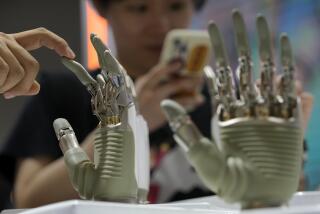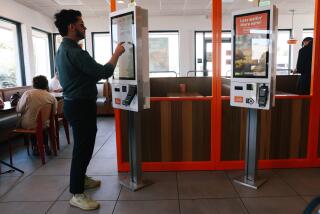Coming soon: Robots that help build buildings
In my previous post, I described the potential for a new era of automated manufacturing in which itâs easier for entrepreneurs to create products but harder for workers to find jobs on the assembly line. A contrary note was sounded, ironically, by a robotics executive, who insisted that the next generation of smart machines would make human employees more valuable, not more dispensable.
The executive, Rethink Roboticsâ Rodney Brooks, didnât offer any concrete examples to support his argument. But Sam Stathis did.
Stathis is an electrical contractor, inventor and serial entrepreneur who wants to give the construction industry a badly needed boost in productivity. His company, Theometrics, offers a digital connection between the people who design buildings and the ones who make them rise from the ground.
At the Techonomy 2012 conference in Tucson on Tuesday, Stathis described a remarkable digital divide between architects and engineers, whoâve been using computers for years to assist their designs, and the construction industry, which still uses chalk-laden string to mark lines on the ground -- a technique handed down from the pyramid-building Egyptians, noted Techonomy host David Kirkpatrick. After the designers finish their work on computers, it gets reduced to printouts that building contractors use at the job site. Accuracy sometimes gets lost in the translation from bits to blueprints, as plans are misread or measurements are botched.
That dependence on paper helps explain why the $4.6-trillion global construction industry is one of the worldâs least efficient, Stathis said. Bucking the common trend, productivity in the construction industry is down 25% over the last 40 years, Stathis said, adding, âWe lose billions of dollars a year because of our inefficiencies.â
Theometricsâ technology provides a bridge between the plans for a project and the job site. Stathis likened his electronic measurement and layout tools to a form of GPS for the building trades, enabling workers to navigate from any point on a digital blueprint or model to its exact location in the field.
Hereâs where the robots come in. Stathis said his company has prototypes of robots that can do the sort of layout-marking tasks that workers now do with tape measures, laser pointers and string. That promises not just to speed up projects but to eliminate the blueprint reading and measurement errors that cost the industry dearly in time and money.
Any increase in productivity could threaten jobs because the demand for construction work could be satisfied with fewer workers. So too could robots that not only mark the layouts for projects but also perform some simple construction tasks -- a prospect that Theometrics has contemplated, judging by this video.
But Stathis scoffed at the suggestion that Theometrics or its robot prototypes could reduce the need for labor. âI promise you, weâre not going to run out of jobs,â Stathis said.
ALSO:
The pros and cons of fiddling with the global thermostat
Marijuana legislation: States send message, feds arenât listening
Follow Jon Healey on Twitter @jcahealey
More to Read
A cure for the common opinion
Get thought-provoking perspectives with our weekly newsletter.
You may occasionally receive promotional content from the Los Angeles Times.











